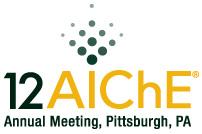
Presenter was César PERNALETE
Authors:
C. G. Pernalete 1, J. M. Contreras 1, R. E. López 1,2, A. Nagel 1,3
1Gerencia Técnica de Refinación. PDVSA Intevep. Venezuela.
2Departamento de Ingeniería Química. Vice-Rectorado de Barquisimeto. Universidad Nacional Experimental Politécnica “Antonio José de Sucre”. Venezuela.
3Departamento de Ingeniería Química. Universidad Metropolitana. Venezuela.
Nowadays, software technology for process simulation has been developed in such an important way that they have become a fundamental tool for the correct operation of several processes, specially in the oil field. The use of this technology had reached a level that enhances human work or indeed substitutes it, improving its efficiency and decreasing the time and effort to carry on activities like process monitoring, control and optimization. In a daily basis, the amount of commercial proposals available in the market for tools to process simulation is increasing.
One of the main strengths of most commercial process simulators is their flexibility to make different kinds of thermodynamic calculations. In the oil industry the equation-of-state approach (EOS) has had an important role in thermodynamic modeling of vapor – liquid equilibrium (VLE) for hydrocarbons. However, these models do not offer good results under certain conditions, like under the presence of hydrogen or at high temperature or pressure conditions, making the system far from an ideal situation. In these cases it is necessary to use special models like the correlation proposed by Chao and Seader in 1961, and the modification proposed by Grayson and Streed in 1963 or the modification made by Chorng H. Twu in 1995 to the Peng-Robinson equation of state.
In spite of all the benefits and advantages that offer the use of commercial software technology for chemical process simulation, from a practical point of view there are some drawbacks. Commercial proposals for process simulation require a license that in most cases is expensive and must be renewed every year. If there is no renewal or purchase of this license it is not possible to develop new simulation projects or to have access to models previously built. This situation generates a problem of technological dependence.
It is important to point out that, chemical process simulators are software tools that provide a set of functions such as physical and thermodynamic property databases, thermodynamic calculations, numerical methods, unit operation and kinetic models. At the beginning, process simulators combined these functions with a programming paradigm where there were not well defined boundaries among these functions. The current trend is to have a process simulator formed as a group of software components that interact or interoperate simultaneously, where each component have well defined duties.
Since 2001, the CO-LaN organization has promoted the creation of the CAPE-OPEN standards, where a set of free-to-use non-proprietary rules and interfaces that allow CAPE (Computer-Aided Process Engineering) applications or components to interoperate, are defined. Currently, most process simulators are somehow compliant with this standard; however, COCO (CAPE-OPEN to CAPE-OPEN) simulator is the CAPE-OPEN compliant reference tool. COCO simulator is a non-commercial software for process simulation that was fully designed inspired by this standard.
According to the philosophy proposed in the CAPE-OPEN standards, in the architecture for process modeling tools in steady state, there must be a “Process Modeling Executive” (PME), which is the component responsible for the building of the entire model and execute the overall calculations to solve the system of equations. In order to meet this goal, the PME must communicate with the other components that describe each unit operation or other calculations like thermodynamic equilibrium, specialized algorithms for solving the entire system or physical properties determination. These components are called “Process Modeling Components” (PMC) since they “wrap” specific tasks in a well defined software unit. PMC’s can be implemented as independent software components but able to communicate among themselves.
In this work, we have implemented some thermodynamic methods, as CAPE-OPEN compliant components: process modeling components following the aforementioned strategy. The idea is to have these components available for using in non-commercial process simulation tools in order to solve specific problems for the oil industry. We have developed three components that implement the following methods: Chao-Seader (1961), Grayson Streed (1963) and Peng Robinson – Twu (1995). Specifically, we have developed them as equilibrium calculators that could be used in a property package as described in the 1.1 version of the standard for physical and thermodynamic properties.
In this study the component TEA (Thermodynamic for engineering application) was used as the property package. TEA is a component conceived as a property package manager that comes with the distribution of COCO simulator. TEA is the only property package available as non-commercial software on the network that is able to deal with external CAPE OPEN equilibrium calculator components. Otherwise it would have been necessary to create a property package and this study would have considered the calculation of chemical-physical properties in addition to equilibrium calculations.
In that sense, as a first step we described the original thermodynamic models considered in this work, including the temperature, pressure and compositions constraints associated to each model. After that we designed the algorithms of each model using UML (Unified Modeling Language). The implementation of the algorithms was made using C++ as programming language taking into account the interoperability standards. As a result, we achieved three interoperable thermodynamic models as CAPE-OPEN equilibrium calculators that could be used in commercial and non-commercial process simulation tools, even though the simulator implements the standard.
For testing and validation of the developed components we used COCO simulator process modeling environment. In first place, we tested the validity of the models through the comparison of its performance in predicting Vapor-Liquid Equilibriums (VLE) in systems composed only by pure components. Secondly, it was selected an experimental system composed by petroleum fractions and whose modeling is made through the use of pseudo compounds. It is important to clarify that temperature and pressure conditions of those systems were within the constraints established for the original models. Finally, a comparison between the results obtained with the developed models and the results showed by a commercial simulation tool that consider the models in study, was made.
We found that the developed models are able to predict with good agreement experimental data about VLE used in the validation step, both in case of pure compounds and in case of petroleum fractions. Moreover, we found that the error prediction of the commercial software were always similar or larger than the reported by the in-house models.
Finally, we noticed a robust performance of each one of the software components of COCO simulator, specially TEA which was responsible for establishing the communication with the equilibrium calculators developed.

